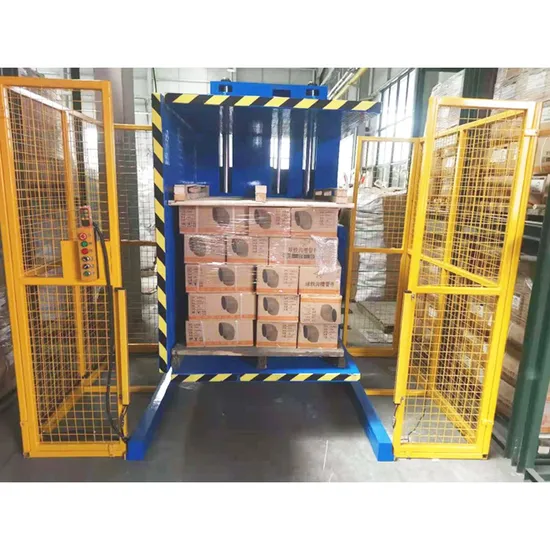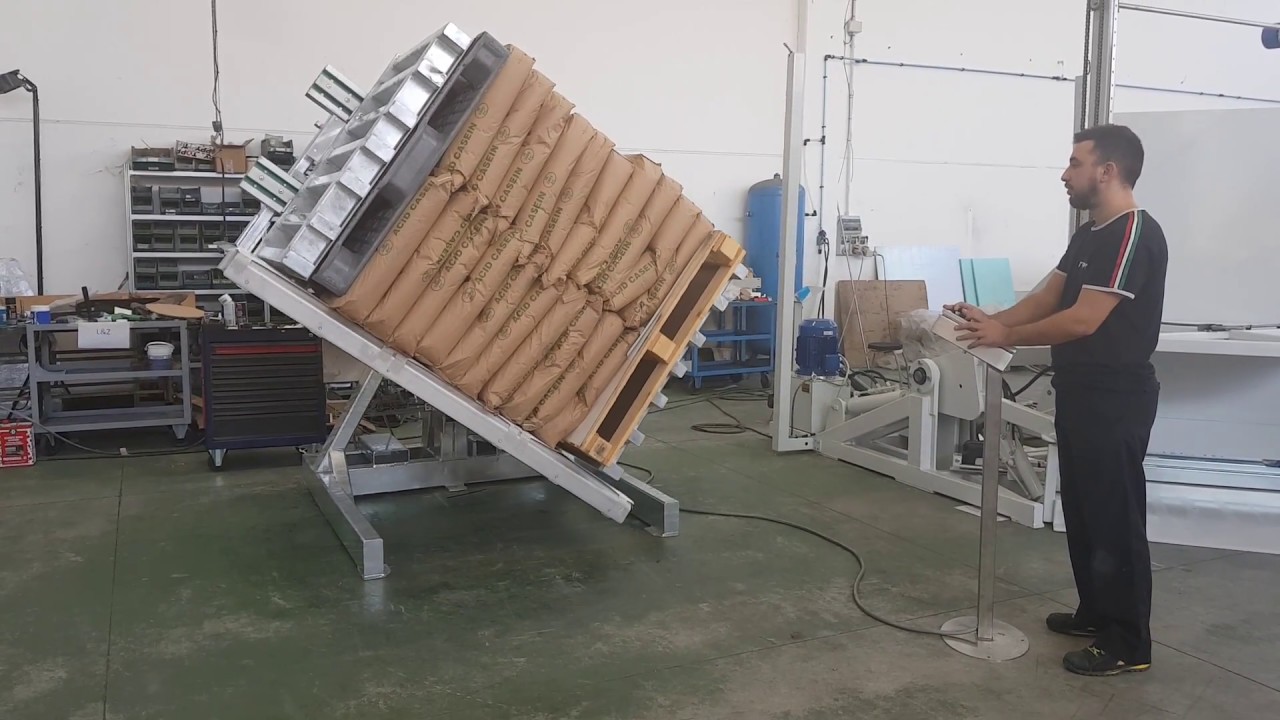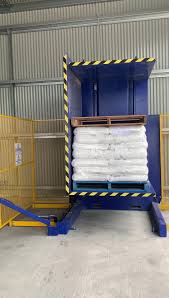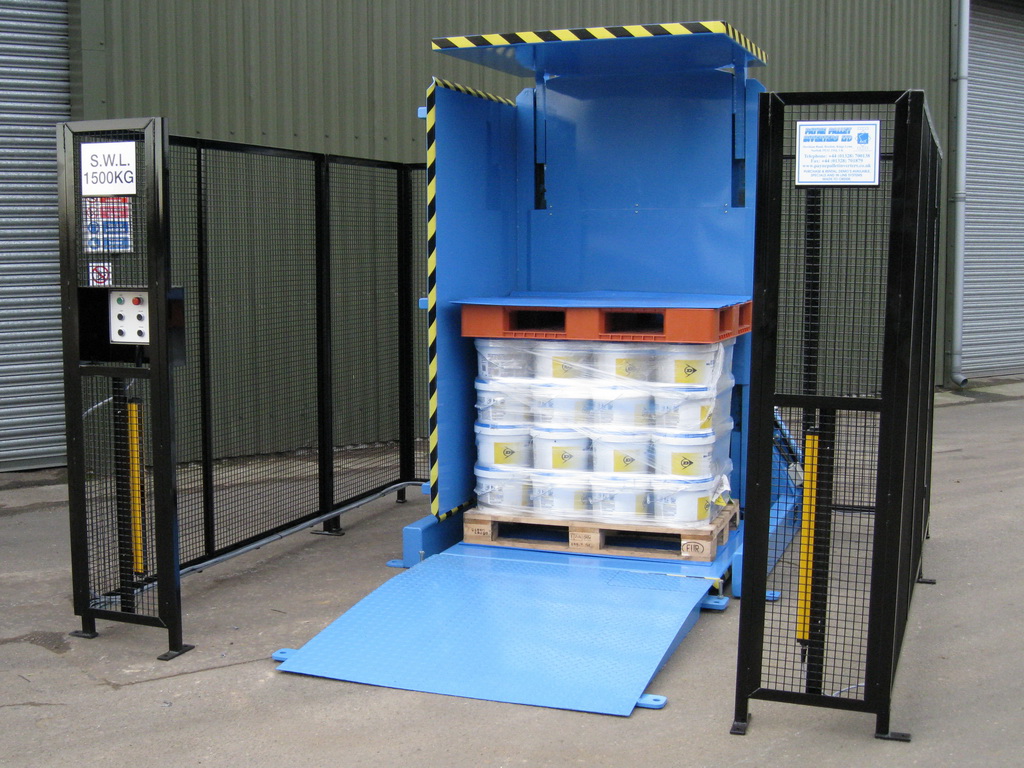Cutting Downtime in Vietnam: How Pallet Changing Machines Help
Your production line is moving smoothly. Materials are flowing, workers are busy, and output is on track. Suddenly, everything grinds to a halt. The reason? A broken pallet. Now, you have a team of workers manually unstacking a ton of goods, a forklift waiting idly, and a bottleneck that is costing you money every single second. This isn't just a minor inconvenience; it's a critical failure point in your logistics chain, especially in fast-paced manufacturing hubs like Vietnam, where every minute of productivity counts. The constant pressure to move faster while keeping costs down makes these manual processes a major liability.
Pallet changing machines, or pallet inverters, directly help cut downtime in Vietnam by automating the slow, risky, and labor-intensive process of transferring goods from one pallet to another. By replacing a multi-person, 30-minute manual task with a single-operator, 60-second machine cycle, these machines eliminate production bottlenecks, reduce product damage, and immediately free up valuable labor and equipment for other critical tasks.

As an engineer who has spent his entire career on the factory floor, I've seen this exact scenario play out countless times. I built my own business, SHJLPACK, on the principle of finding simple, robust solutions to these kinds of persistent problems. It’s how I achieved my own success, and it’s how I’ve helped my clients grow. A pallet changer isn't just a piece of steel; it's a strategic tool. Let’s break down exactly how this equipment can transform your operations, especially in a dynamic market like Vietnam.
How Do Pallet Changers Directly Reduce Manual Handling Downtime?
You see a forklift and three workers gathered around a pallet of goods. The forklift driver is waiting. Two workers are carefully, but slowly, unstacking boxes onto a new pallet. It's a common sight in many warehouses. But what you are really seeing is a planned, accepted, and costly period of downtime. This manual process is a black hole for productivity. It relies entirely on labor availability, and it's prone to human error, fatigue, and delays.
A pallet changer reduces this specific type of downtime by mechanizing the entire transfer process. Instead of workers manually moving items one by one, the machine clamps the entire load, rotates it, and allows the original pallet to be swapped out in a single, fluid motion. This transforms a lengthy, multi-step manual process into a quick, automated cycle that is measured in seconds, not minutes.

To truly grasp the impact, you need to look beyond the surface. It's not just about swapping one pallet for another. It’s about fundamentally changing how your workflow handles exceptions and transitions. I've worked with many factory managers, and the ones who succeed are those who attack these small, recurring pockets of inefficiency. They understand that ten 15-minute delays a day add up to over two hours of lost production time. A pallet changer is a direct assault on that lost time.
The Breakdown: Manual vs. Automated
Let's dissect the two processes. When you see it laid out side-by-side, the difference in efficiency is stark. The manual method is not just slow; it's a sequence of dependent steps, where a delay in one step cascades through the entire process.
Manual Pallet Swapping:
- Identify Problem: A worker or scanner identifies a damaged or incorrect pallet.
- Request Resources: The worker must find a supervisor to authorize the swap.
- Gather Team: A forklift and at least two laborers are assigned. They must stop what they are doing.
- Transport: The forklift moves the pallet to a designated restacking area. This area must be clear.
- Manual Unloading: Two workers begin hand-bombing the product from the old pallet to the new one. This is physically demanding.
- Quality Check: Each item transfer risks damage. Boxes can be dropped, bags can be torn.
- Waste Disposal: The broken pallet must be removed and disposed of.
- Resume Flow: The forklift returns the new pallet to the production or shipping line.
Automated Pallet Changing:
- Identify Problem: The pallet is identified.
- Transport: A forklift or even a conveyor moves the pallet directly to the pallet changer.
- Machine Cycle: A single operator positions the load, presses a button, and the machine clamps, rotates, and allows the pallet to be exchanged.
- Resume Flow: The forklift immediately takes the corrected pallet back into the workflow.
The difference isn't just about speed; it's about resource allocation. In my experience helping a beverage company in Vietnam, their biggest "Aha!" moment was realizing their highly-paid forklift drivers were spending almost 20% of their day just waiting. By installing a pallet inverter near their receiving dock, we didn't just speed up pallet swapping. We liberated their forklift drivers to perform their primary function: moving goods.
| Feature | Manual Process | Automated Process with Pallet Changer |
|---|---|---|
| Time per Pallet | 15-30 minutes | 1-2 minutes |
| Labor Required | 2-3 Workers + 1 Forklift Operator | 1 Operator (can be the forklift driver) |
| Risk of Product Damage | High (due to multiple touchpoints) | Extremely Low (load is clamped securely) |
| Risk of Injury | High (lifting, bending, repetitive motion) | Minimal (operator uses controls) |
| Floor Space | Requires large, clear staging area | Compact, fixed footprint |
| Process Consistency | Varies with team skill and fatigue | Identical, repeatable cycle every time |
This shift from a variable, high-risk manual task to a predictable, low-risk automated one is the core of modern manufacturing efficiency. It directly addresses the goal of increasing asset utilization, because your most valuable assets—your people and your equipment—are no longer tied up in low-value, time-consuming tasks.
What Are the Hidden Costs of NOT Using a Pallet Changer in a High-Volume Plant?
When a business owner looks at their operation, they see the obvious costs: labor, materials, energy. But what I’ve learned is that the most dangerous costs are the ones you don't see. When you rely on manual pallet handling, you are paying for more than just the workers' time. You are paying for damaged products, workplace injuries, and the massive opportunity cost of production bottlenecks. These hidden expenses silently eat away at your profit margins.
The hidden costs of not using a pallet changer are substantial and go far beyond direct labor. They include the cost of scrapped or discounted products due to damage during manual handling, increased insurance premiums from worker compensation claims, and the lost revenue from production bottlenecks that cap your plant's total throughput and delay shipments.

Thinking about these hidden costs is what separates a good plant manager from a great one. A great manager, like a CEO I know who runs a steel mill, looks at every process through the lens of risk and total cost of ownership. It’s not about the upfront price of a machine; it’s about the long-term cost of not having it. In a high-volume environment, these small, hidden costs multiply quickly and can become a major financial drain.
Uncovering the True Cost of Manual Handling
Let's put some real-world context to this. I once worked with a client in the paper industry in Vietnam. They produced massive rolls of paper, and any damage to the edges of the roll meant the entire product had to be discounted or scrapped. They were using manual methods to flip loads and change pallets, and they accepted a 2% damage rate as "the cost of doing business." When we analyzed the process, we found that almost all of that damage was happening during these manual transfers.
Here’s a breakdown of the costs they weren't tracking properly:
| Cost Category | Description | Annual Impact Example (for a mid-size plant) |
|---|---|---|
| Product Damage | Goods dropped, crushed, or contaminated during manual transfer. This leads to scrap or rework. | 1% of goods handled are damaged. At $5M in goods, this is a $50,000 loss. |
| Workplace Injuries | Musculoskeletal disorders (MSDs) from lifting and twisting. Leads to medical bills and lost time. | One serious back injury claim can easily cost over $25,000 in direct costs. |
| Increased Insurance | Higher workers' compensation premiums due to a poor safety record from manual handling incidents. | Premiums can be 10-20% higher, costing $10,000 - $20,000 annually. |
| Opportunity Cost | Production line is stopped or slowed, waiting for the manual pallet swap. You can't produce more. | 2 hours of lost production per day. If hourly output is valued at $1,000, this is a $500,000+ annual loss in potential revenue. |
| Labor Inefficiency | Skilled workers (like forklift drivers) are tied up in low-skill tasks instead of value-added work. | A forklift driver spending 25% of their time waiting or assisting is a $10,000+ waste of specialized labor cost. |
When the paper company saw these numbers, the decision became simple. The cost of a pallet inverter was a fraction of the money they were losing every year. After installation, their damage rate dropped to virtually zero. Their insurance broker even noted the improvement in their risk profile. The biggest impact, however, was on throughput. With the bottleneck removed, they were able to increase their line speed, leading to a significant boost in overall output. This is the power of addressing hidden costs. You don't just save money; you unlock new potential for growth.
How Can Pallet Inverters Improve Safety and Compliance in Vietnam's Evolving Market?
In rapidly industrializing countries like Vietnam, safety regulations are often playing catch-up with the pace of manufacturing growth. But the trend is clear: standards are becoming stricter, and enforcement is getting tougher. Relying on manual lifting for heavy pallet loads is no longer just inefficient; it's a significant legal and financial liability. A single workplace accident can trigger government inspections, hefty fines, and damage your company's reputation.
Pallet inverters fundamentally improve safety and compliance by engineering out the primary risk associated with pallet handling: manual lifting. By automating the process, they eliminate the bending, twisting, and straining that lead to common and costly musculoskeletal injuries. This directly helps companies meet rising occupational health and safety (OHS) standards and demonstrates a proactive commitment to worker wellbeing.

From my own journey starting as an engineer on the factory floor, I have a deep respect for the physical demands of this work. I've seen firsthand how a nagging back injury can affect a worker's life and a company's morale. For a leader like a steel mill owner, creating a safe work environment isn't just a legal requirement; it's a core part of building a stable, productive workforce and a sustainable business. It is a strategic imperative.
From High-Risk to Low-Risk: A Safety Transformation
Let’s be very specific about the risks. The manual process of transferring a 1,000 kg load from one pallet to another is a textbook example of a high-risk ergonomic task. It involves multiple hazards that safety professionals are trained to eliminate.
A pallet inverter transforms this risk profile entirely. The machine bears the load, not the person.
Here is a simplified risk assessment comparing the two methods, similar to what a safety officer would prepare:
| Hazard Identified | Risk in Manual Process | How Pallet Inverter Mitigates Risk |
|---|---|---|
| Awkward Postures | High Risk. Workers must bend at the waist and twist their torso to lift boxes from a low pallet. | Risk Eliminated. The machine presents the load at a comfortable working height. No bending or twisting is required. |
| Forceful Exertion | High Risk. Repetitively lifting heavy items (e.g., 15-25 kg boxes) leads to muscle strain. | Risk Eliminated. The machine's hydraulic or electric system provides all the force needed to clamp and rotate the load. |
| Repetitive Motions | High Risk. Repeating the same lift dozens of times per pallet causes cumulative trauma to joints and spine. | Risk Eliminated. The operator's job is reduced to pushing buttons and using a pallet jack, a much less repetitive task. |
| Contact Stress | Medium Risk. Kneeling on hard concrete floors or leaning against pallets can cause injury. | Risk Eliminated. The operator stands upright at a control panel. |
| Falling Objects | Medium Risk. An unstable stack can collapse during manual transfer, injuring workers. | Risk Minimized. The load is securely clamped by the machine's pressure plates throughout the entire cycle. |
In a market like Vietnam, showing that you have invested in modern, safe equipment can be a competitive advantage. It helps in attracting and retaining skilled labor. It simplifies compliance with both local regulations and the standards required by international customers (like ISO 45001 for occupational health and safety). I recall a client who was trying to win a contract with a large European retailer. The retailer’s audit team was very impressed that they had pallet inverters at their shipping docks, noting it as a clear sign of a mature and responsible operation. That investment in safety directly helped them secure a major new piece of business.
What's the ROI on a Pallet Changing Machine for a Steel or Manufacturing Plant?
As a business owner, every investment decision comes down to one question: will it make my business stronger? You face constant pressure to reduce costs and increase output. A new piece of equipment isn't a trophy; it's a tool that must pay for itself and deliver a clear return on investment (ROI). The idea of spending capital on a pallet changer might seem like a secondary concern compared to a new production line, but the financial impact can be surprisingly direct and rapid.
The Return on Investment (ROI) for a pallet changing machine is typically achieved within 12 to 24 months. This rapid payback comes from a combination of hard and soft savings, including drastically reduced labor costs for manual handling, elimination of product damage, lower insurance premiums due to improved safety, and increased plant throughput by removing a critical bottleneck.

I've walked through this calculation with dozens of clients, from food processing plants to massive steel operations. The principles are the same. A leader like Javier Morales, who scrutinizes every capital expense, would appreciate this kind of rigorous analysis. It’s not about emotion; it’s about the numbers. The money you are currently losing to inefficiency and damage is the money that will pay for the solution.
A Practical ROI Calculation
Let's build a conservative ROI model for a typical manufacturing plant in Vietnam that handles 20 problematic pallets per day (due to damage, export requirements, etc.).
Assumptions:
- Cost of Pallet Changer: $25,000 (includes installation and training)
- Manual Handling Time per Pallet: 20 minutes
- Automated Handling Time per Pallet: 2 minutes
- Labor Rate (fully burdened): $5 per hour per worker
- Workers per Manual Team: 2
- Product Damage Rate (Manual): 1% of value
- Average Pallet Load Value: $1,500
- Operating Days per Year: 250
Here’s how the savings break down:
| Savings Category | Calculation | Annual Savings |
|---|---|---|
| 1. Direct Labor Savings | Time saved per pallet: 18 mins. Daily time saved: 18 mins 20 pallets = 360 mins = 6 hours. Labor saved: 6 hours/day 2 workers * $5/hr. | 6 2 5 * 250 = $15,000 |
| 2. Product Damage Reduction | Pallets handled per year: 20 250 = 5,000. Value of handled goods: 5,000 $1,500 = $7.5M. Assuming damage is virtually eliminated, savings are 1% of the value of only the handled goods. (Let's be conservative and say 1% of $1M worth of product is at risk). | 1% * $1,000,000 = $10,000 |
| 3. Increased Throughput (Opportunity) | Daily time saved: 6 hours. Let's assume only 1 hour of this translates to extra production, valued at $100/hr profit. | 1 hour/day $100/hr 250 days = $25,000 |
| Total Annual Savings | $15,000 + $10,000 + $25,000 = $50,000 |
ROI Calculation:
- Total Investment: $25,000
- Total Annual Savings: $50,000
- Payback Period: $25,000 / $50,000 = 0.5 years, or 6 months.
Even with very conservative estimates, the payback period is incredibly short. For a high-volume steel plant where downtime is measured in thousands of dollars per hour and product value is high, the ROI is even faster. This calculation doesn't even include the softer benefits like lower insurance premiums, improved worker morale, and enhanced company reputation. This isn't an expense; it's one of the highest-return investments you can make in your plant's logistical efficiency.
What Are My Personal Insights on Implementing Pallet Changers?
Over the years, I've sold and installed many pallet changing machines. I've learned that buying the machine is not the last step; it's the first. The success of this investment doesn't depend on the machine alone. It depends on how you integrate it into your world. I've seen brand new, powerful machines sit in a corner collecting dust because of poor planning. And I've seen simple, well-placed machines completely revolutionize a company's workflow.
My most important insight is this: treat a pallet changer not as a standalone device, but as a node in your entire material flow system. The key is to analyze your workflow before you buy. Understand where your bottlenecks truly are, what types of loads and pallets you handle, and how operators will interact with the machine. A successful implementation is about strategic integration, not just installation.
This is where the idea of a supplier being a strategic partner becomes real. A true partner doesn't just sell you a box. They ask questions. They walk your floor. They help you think through the process. My goal with SHJLPACK has always been to share the knowledge I gained building my own factory to help my clients avoid common pitfalls.
A Checklist for Successful Integration
Before you even request a quote, you should think like an engineer and map out the process. Here are the key questions I always ask my clients:
-
Where is the Pain Point?
- Where do bad pallets enter your system? Is it at the receiving dock from suppliers?
- Is it in production, when moving from in-house pallets to shipping pallets?
- Is it at the final shipping dock, where you need to switch to export-compliant or customer-specific pallets?
- Insight: The location of the machine is critical. Placing it far from the point of need will create new travel time and reduce its effectiveness. It needs to be right in the flow of traffic.
-
What is Your Load?
- What is the weight, height, and stability of your typical pallet load?
- Are you handling boxes, bags, pails, or coils? Are they fragile?
- Insight: This determines the type of machine you need. A 180-degree inverter is great for stable, boxed goods. A 90-degree tipper or a pallet pusher might be better for less stable or sensitive loads. Choosing the wrong type can be a costly mistake.
-
How Will It Integrate with Your Workflow?
- Will it be a forklift-loaded, standalone station?
- Could it be integrated into an automated conveyor line?
- Who will operate it? The forklift driver? A dedicated operator?
- Insight: Proper training is essential. The machine must be seen as a tool that makes the operator's job easier, not harder. I once saw a client's team resist using a new machine until we held a short session showing them how it saved them from back-breaking work. After that, they fought over who got to use it.
| Integration Factor | Poor Planning | Strategic Planning |
|---|---|---|
| Location | Placed in an unused corner, far from the workflow. | Sited directly at the bottleneck point (e.g., receiving or shipping). |
| Machine Type | Bought the cheapest model, which can't handle their heaviest loads. | Selected a machine (inverter, pusher, etc.) based on load stability and type. |
| Operator Training | "Here's the manual. Figure it out." | Formal, hands-on training focusing on safety and efficiency benefits. |
| Maintenance | No plan. Machine is run until it breaks. | A clear preventive maintenance schedule is established with the supplier. |
Ultimately, my advice is to find a partner who wants to understand your business. My passion comes from having been in your shoes. I built my factory from the ground up, and I know that success comes from making smart, informed decisions that improve your entire system, one piece at a time.
Conclusion
Investing in a pallet changer is not about a machine. It's about buying back time, eliminating waste, and protecting your people. It's a strategic move towards a more efficient and profitable operation.




